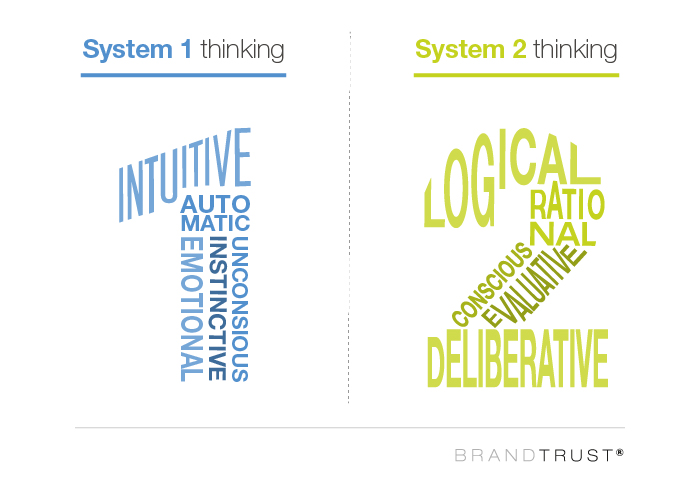In the first two months of 2009, Tropicana’s orange juice sales plummeted 20 percent. Elsewhere in the category, competitors flourished. Minute Maid, Florida’s Natural, and Tree-Ripe Citrus each saw significant jumps in purchases, causing total sales to remain relatively stable across the sector. Consumers weren’t buying less juice; they were buying less Tropicana.
Much to the chagrin of the brand’s executives, the culprit was clear: Tropicana had undergone a rebranding effort. In lieu of their classic packaging featuring a straw extending from an orange, their cartons now bore a fresh, modern look. For reasons the brand could not quite understand, the effects of this well-intentioned change were devastating. Reliable buyers rejected the product’s altered appearance, turning to alternatives instead.
By late February, the company had reversed its rebranding decision, reverting to its prior packaging. Neil Campbell, president of Tropicana North America, seemed stunned by consumers’ apparent attachment to his product’s presentation. “We underestimated the deep emotional bond,” he said.
System 1 Thinking: The Influence of the Nonconscious
Why do we choose the orange juice we do? Faced with this question, few buyers would identify packaging as a prime concern. Presumably, they’d offer more reasoned justifications: taste, quality, freshness, or value.
However, Tropicana’s misfortune undermines our pretensions to rationalize purchase behavior. The juice inside the carton remained unchanged. The price did not increase.
In 2005, Brandtrust worked with Tropicana to develop its brand strategy. Our findings helped create the prior packaging, and cautioned against the disastrous change in 2009. When the company eventually changed course, they reverted back to the look we had previously advised.
How did we foresee the troublesome results of this change in packaging? A powerful truth informed our work with Tropicana, as it does with all our clients: Buying decisions are propelled by more than the logical distinctions we draw between brands.
Indeed, deliberate calculation plays a relatively minor role in most of our choices. For human beings, the dominant mode of cognition is instinctive, associative, and utterly imperceptible to us as conscious thought. We call this type of mental functioning System 1 Thinking.
First defined by Nobel laureate Daniel Kahneman, System 1 refers to our instinctive mind, which absorbs data from the surrounding world and responds automatically. Kahneman contrasts this capacity with System 2, the realm of conscious thought and rational evaluation.
The term System 1 implies the primacy of our nonconscious processes, and with good reason. While we’re inclined to view ourselves as rational creatures, our intuitive thinking actually accounts for the vast majority of our cognitive activity. In fact, neuroscience research tells us 95 percent of our mental function occurs at this nonconscious level.
Why would so much of human thought fit under the System 1 umbrella? Because it was – and remains – integral to our survival.
In centuries past, humans confronted with a predator or natural disaster relied on instinct rather than evaluation. To evade death in these circumstances, one can’t waste precious time weighing the merits of running away.
More generally, we depend on System 1 thinking to manage the stream of data the world throws our way. We can’t rationally consider the millions of data points that reach our senses each minute. If we relied on System 2 thinking alone, we’d find ourselves paralyzed by the complexity of our environments.
How does the System 1 mind handle the sheer quantity of inputs to which we are exposed? It does so primarily through neural shortcuts, which Kahneman calls heuristics. Instead of examining pieces of data individually, we nonconsciously assimilate new information into associative patterns we’ve formed previously.
Malcolm Gladwell describes this phenomenon as “thin-slicing,” the rapid and nonconscious categorization of our experiences into pre-existing mental models. When a stranger extends her hand in greeting, we don’t analyze this gesture with fresh eyes each time. We don’t wonder at her intentions, or the meaning implied by her offered hand. We shake it.
The relevant question for brands is quite clear: How can companies make consumer loyalty equally instinctive? Given the dominance of System 1 thinking, marketers must access and engage it to succeed. But traditional appeals to customers’ rational motives (such as price) won’t suffice.
The answer lies in the emotional nature of our nonconscious cognition. Indeed, feelings are the main way in which System 1 thoughts are both experienced and influenced.
However rapid our instinct, it cannot begin without a signal from the limbic system of the brain. This area is associated with our most fundamental feelings – fear, attraction, relaxation, and apprehension. In their hopes to influence System 1 thinking, brands’ efforts will fail and succeed by their ability to inspire emotion in their customers.
Tropicana’s misguided rebranding effort makes the complexity of this challenge abundantly clear. With the best intentions, the company unwittingly eliminated a major part of their positive brand heuristic for consumers.
For many buyers, the result was a System 1 response of aversion. That the juice remained the same (a System 2 observation) mattered little. When Campbell, the Tropicana executive, called customers’ preference for the classic carton an “emotional bond,” he did not know how right he was.
For nearly 20 years, our Brandtrust team has helped brands uncover and improve the emotional responses they produce in consumers. Through methods rooted in social science, we help them earn the instinctive loyalty of their target audiences. Below, we share some basic principles of System 1 branding that we’ve developed through our efforts.
System 1 Insights Every Marketer Should Know
Design for System 1 and 2 – In That Order
It’s often said good products solve a problem. While this principle is largely accurate, it can sometimes encourage too great an emphasis on the minutiae of marketing, like features and pricing. These are System 2 concerns, important but secondary. What if your brand’s value proposition could speak to a deeper need?
This System 1 appeal will be emotional and intangible – and may even conflict with System 2 conclusions. In one study, our Brandtrust team explored the nonconscious emotions men felt in connection with grills, a product category marketed mostly to males. Through our Emotional Inquiry® interview process, we found men relished the responsibility of maintaining the flames, recalling the rustic customs of campfire cooking.
However, the market for grills is packed with high-end options that render the operator irrelevant. With a range of features so precise these grills are virtually outdoor ovens, System 2 concerns are certainly satisfied. But the buyer’s System 1 needs are left neglected: Nothing is satisfying or rustic about a pricey appliance on autopilot.
With this finding in mind, we helped innovate a product that would empower customers to take ownership of the grilling process, with features that recalled the simple charm of cooking over coal. But we also suggested practical fixes to some of the obnoxious aspects of grilling that emerged during our interview process: propane problems, limited prep space, and difficulty opening the grill when hands were full.
In this way, we targeted the consumer’s emotional needs and then eliminated barriers to their improved experience.
Takeaway: The most important problems are often unseen. Prioritize your buyer’s emotional needs, and then let System 1 truth dictate your other choices.
Choose Story Over Selling Points
As discussed earlier, patterns take precedence over particular data points in the System 1 mode of the mind. Yet marketers often hope an isolated bit of information will attract customers, pointing to a lowered price or distinctive feature.
They’d have more success by shaping brand narratives instead. In the human mind, it’s stories that stick – which is why metaphor and historical accounts are key tools in any teaching endeavor. To teach your brand’s worth to the world, you’ll need a story on your side.
Narrative collects coherent meaning from the chaos of disordered data. System 1 thinking performs exactly this function at an nonconscious level. Thus, it’s no wonder stories can affect our intuitions better than data can.
Stories are their own heuristic of sorts: When we see a brand striving to fulfill a set of values, it becomes synonymous with those values. In this regard, we recommend doing, rather than telling. Demonstrate a passion for your brand’s purpose through authentic action, and your customer’s nonconscious associations will be firmly positive. That’s a benefit no single data point can deliver.
Takeaway: Determine your brand’s purpose, and then back it up with action. That narrative will matter more than any single sales pitch could.
Make Good First – and Final – Impressions
The function of System 1’s neural shortcuts is to simplify our experiences through representative patterns. While our instinctive feelings toward a given brand are an amalgam of interactions, some moments outweigh others as we form these associations.
First impressions are instrumental, as they dictate which mental model your consumer will apply to subsequent experiences. Consider the experience of a potential customer sitting on hold for an extended period before reaching a salesperson. No matter how cheery that salesperson may be, an associative framework of frustration is already firmly established, coloring that would-be customer’s impressions of what comes next.
Equally important, however, are closing experiences with a given brand, as well as moments of peak emotional intensity throughout. Kahneman has used the term “Peak-End Rule” to describe the crucial ways these specific junctures inform our brand heuristics.
If you want your brand to benefit from System 1 attraction (or avoid instinctive aversion), you’ll need to identify and prioritize these “peak” and “end” moments throughout the journeys of your current and prospective customers. Fail to do so, and your brand could be perceived by ill-timed shortcomings, instead of your general success.
Takeaway: Focus on the most impactful moments of the client experience. While uniformly excellent service is an admirable ideal, specific emphasis is effective and feasible.
Finding System 1 Success
These insights, when implemented correctly, can effectively transform a brand’s marketing and service philosophy, aligning strategy with the way customers truly think. But while the promise of System 1 thinking is universally appealing, miscues in this arena can be devastating – as Tropicana now knows well. Thus, just as Kahneman applied the techniques of social science to define System 1 thought, we must observe the same rigor to understand it more specifically.
In our work with many of the world’s most respected brands, Brandtrust has leveraged meticulous research methodologies to convert these concepts into actionable insights and strategies for brands. Uncovering the emotional drivers of purchase decisions, we seek to understand the instinctive inclinations of our clients’ customers. With confidence in our conclusions, brands can begin to reach their audiences at the level of human truth.
To learn more about our research and see how we’ve helped some of the world’s biggest brands, get to know our work.


